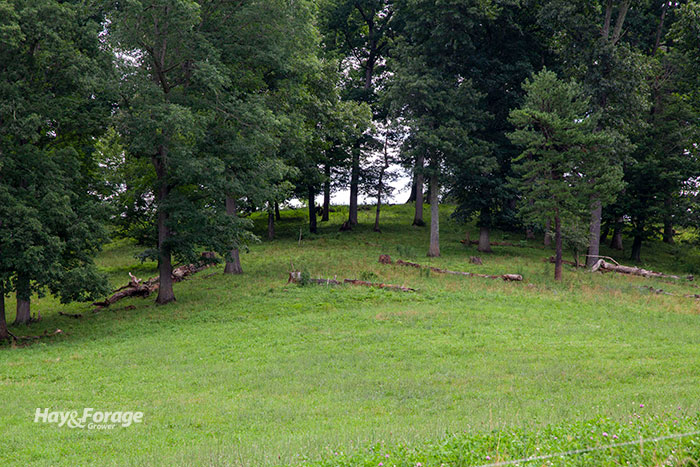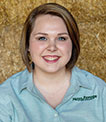Food plots for livestock |
| By C.J. Weddle |
|
|
 A common practice for hunters is to transition wooded areas into palatable food plots for wildlife; silvopastoral systems are based on the same idea. Dirk Philipp, University of Arkansas associate professor, shares his experience with transitioning forest land into silvopastoral pastures in a recent issue of Animal Science E-Newsletter. 1. Small scale Like wildlife food plots, you only want to transition small portions of your forestland into grazing areas. One of the reasons for using silvopastoral systems is to utilize an area for grazing while maintaining its woodland characteristics. The cooler air and soil temperatures provide creature comforts and encourage livestock to graze there. Another reason for small scale renovation is cost. Converting an entire area of forestland can get expensive. Clearing forestland usually requires a dozer, along with other equipment, and the labor needed to properly operate it. 2. Annual Forages “There are several advantages to annual forages: They establish quickly and reliably, generate a lot of biomass, are competitive, and with luck and management they will reseed,” says Philipp. Similar to wildlife food plots, ryegrass is a good candidate for silvopastoral systems. The cool-season annual is ready to graze quicker than other species, and it is palatable and persistent. Other species such as crimson clover and arrowleaf clover, which are both annual legumes, are good candidates for this system as well. 3. Perennial Forages Perennial forages struggle to thrive in heavily shaded areas of silvopastoral systems, but in Philipp’s experience, orchardgrass is one of the few that will not only survive but also persist a few years. He says, “We’ve also seen that forage plants respond to their new environment by changing plant morphology.” He explains that plants may grow lower to the ground or simply not generate enough biomass to be effective as grazing forages. 4. Planting Once you have considered what to plant, consider how it should be planted. “As researchers, we sometimes have to do everything perfectly to ensure consistency to make results verifiable and repeatable,” Philipp remarked. “We like to use drills, but sometimes they’re not available to farmers, so broadcasting will have to suffice.” This should not discourage farmers, though. By providing seed-to-soil contact, landowners should obtain reasonably good stands of forage crops in normal years. Also, two profit center enterprises can be derived from the same land.  C.J. Weddle C.J. Weddle is serving as the 2020 Hay & Forage Grower editorial intern. She currently attends Mississippi State University, majoring in agricultural education, leadership, and communications. She grew up on a farm in Vardaman, Miss., where her family raises sweet potatoes and soybeans. |
